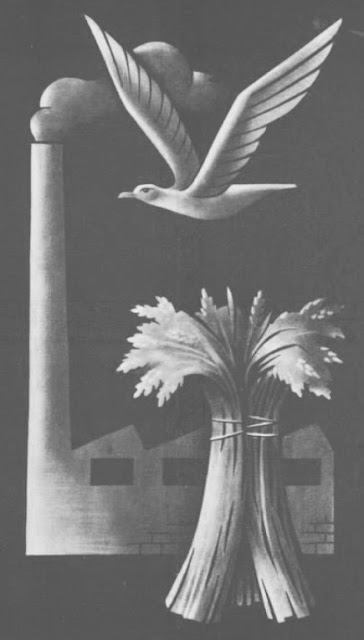Seeing some "Folkish" if not "Future-leaning"
Totalitarian art from its "finest"
or after got stumbled at "Thule Art Gallery"
with all its featured artworks
Totalitarian art from its "finest"
or after got stumbled at "Thule Art Gallery"
with all its featured artworks
At first, this person has less to say besides that those works are aesthetically nice despite its controversial nature, particularly coming from sites such as "Thule Art Gallery" and other related sites featuring artworks made by Fascists.
 |
| Antonio Donghi's Woman at the Cafe (1932) |
Controversial in a sense that the makers were providing art to a totalitarian regime, that according to the latter had trying to invoke the idea of the folk such as though visual art.
That somehow made those artists afforded to make it and trying to say that their works invoke the folk with all its scenes and actions reflecting those of the folk's daily doings, be it the farming or the forging, if not longing for peace through a new order.
This person may have opposed their past regime's views with all its attempts to keep the status quo beneath the veneer of unity and sorts of "change", but in seeing those artworks, be it painting or a woodcut, or even a porcelain work this person thinks that despite invoking those of the folk, that they afforded to use some of their modern aestherics to a totally traditionalist form such as a rusticated populace, is asking that was this the future their leaders trying to think and show to its subjects? Mussolini looked for the future as the futurists do, Hitler emphasised much of the rural folk with its classicism and abhorring modern art as degenerate, and Franco yearned for a Habsburg revival in its artworks while tolerating those of Dali's and yearning to bring Picasso's.
 |
| From a poster made by Cornelis Koekkoek |
 |
| From a poster made by Lou Manche |
 |
| An artwork made for the Danish SS volunteers by Harald Damsleth |
 |
| An artwork made for Quisling's "Nasjonal Samling" by Harald Damsleth |
To others may deem it strange in featuring, but those works reflect aspirations, although it has been synonymous to regimes what people abhor about. The works of those artists may almost classify as "AgitProp" given its appeal to the people to fight for the folk with all its featured heroes, of making a future wherein "justice has been served"; yet given its style somewhat reminiscent of classical artworks, this shows the idea of making high art "popular", of making realism appealing to the masses amidst its appearance likely to be understood by those on high, hence, bridging classical appearances with modern methods, of high art and popular aspirations.
Again, aesthetically nice. For the artists, it reflects what they want to convey such as social justice, peace and labour, but those times made these artists and their artworks synonymous with regimes most people rather criticise about.





